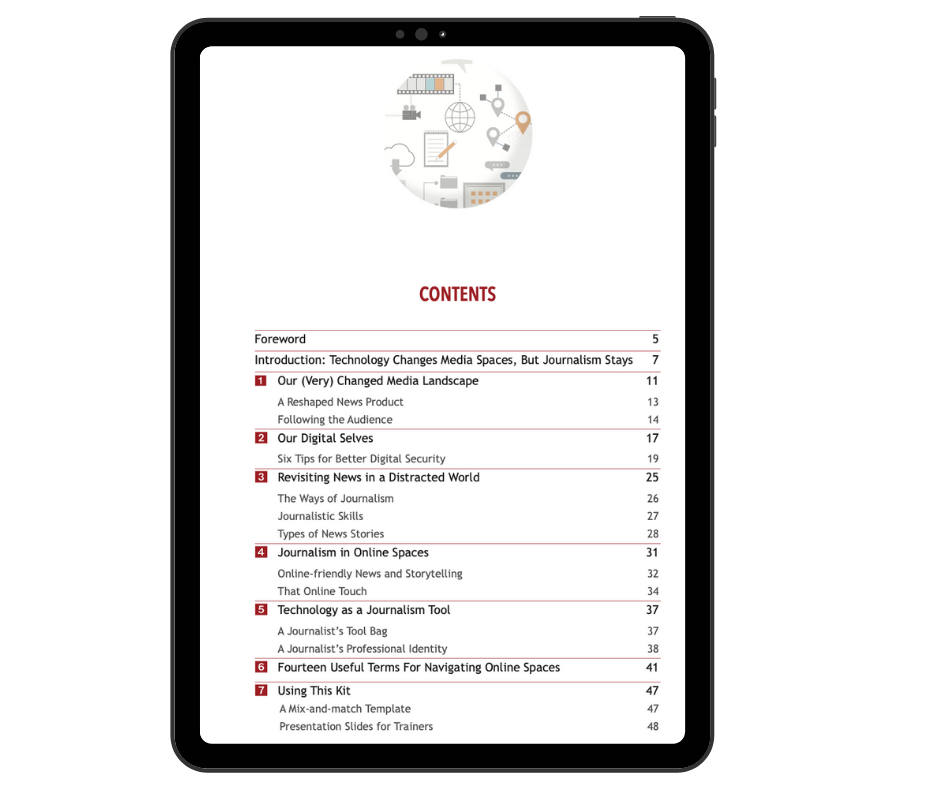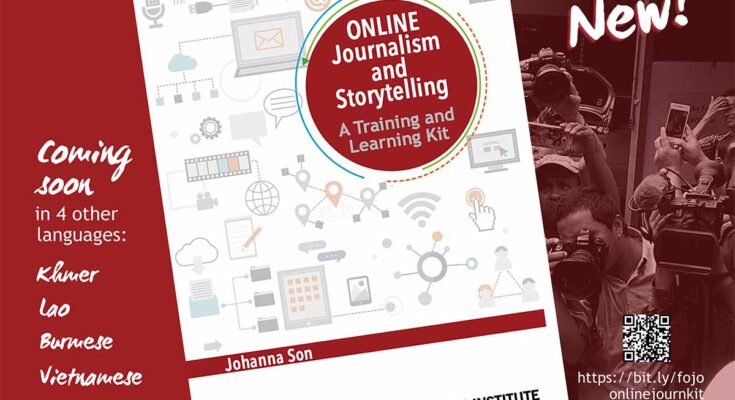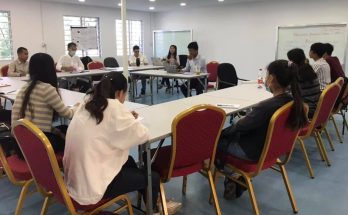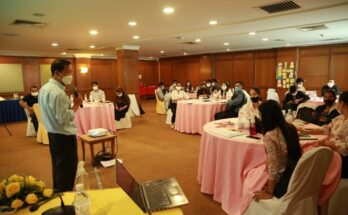Is your newsroom keen on switching gears to adjust to audiences’ online habits and tastes? What are the more secure digital tools you can use to improve storytelling or to create more online-friendly news products? Are you looking for ways to adapt better to doing journalism from your computer at home, amid the global COVID-19 pandemic?
Many tips that can help a journalist find his or her way through these questions, which news professionals face in Southeast Asia and other developing countries, are in the newly published handbook ‘Online Journalism and Storytelling: A Learning and Training Kit’.
The publication of the 55-page book is part of the Southeast Asia Media Training Network (SEAMTN) project of the Fojo Media Institute. It was written by Johanna Son, a Bangkok-based editor who is also a consultant media trainer in the institute’s activities in Cambodia, Laos, Myanmar and Vietnam, which are together called the CLMV countries.
The English edition of the online journalism resource was released in mid-August 2020, and this will be followed by the publication of the translated editions in Khmer, Lao, Burmese and Vietnamese.
THE MULTI-SKILLED JOURNALIST
“Far from unusual these days is the multi-skilled journalist who can be writing an article, but can also produce short videos and blogs, take publishable photos and do basic editing of these, produce a podcast and infographics, run a basic check on the reliability of online posts and manage social-media pages,” Son wrote in the introduction to the kit.
The value of this versatility was all too clear during the COVID-19 pandemic, which saw the media profession trapped in movement restrictions that denied them their standard avenues for news production: mobility and first-hand coverage. “The COVID-19 pandemic has also forced most news and media professionals to do online reporting, often without being adequately prepared for this shift,” Nai Nai, who is SEAMTN programme manager, and Lars Tallert, Fojo’s head of policy and international development, pointed out in the book’s foreword.
But becoming a multi-skilled journalist is a process that is far from automatic or inevitable in many newsrooms in Southeast Asia, and in the journalism and technology environments of the CLMV countries.
Although their citizens have wide internet access, use social media and often access news through these platforms, their countries’ media infrastructures and ecosystems are shaped too by factors such as their political systems and social settings. In their daily work, it is far from uncommon for journalists to grapple with issues like slow data speeds, cost and reliability of internet connections – or lack of wifi connections in news offices.
News and digital literacy are skills that need to be learned and practiced, alongside reporting work. This is because while digital technology has opened the door to countless opportunities and cut news production costs, the online environment that it has nurtured also “comes with more ‘noise’ and unchecked information, some of which are confused with news,” explained Son.
“Media houses in this part of Southeast Asia are keen to adapt more to their audiences’ changing news habits, but they do not always have the background and resources to help this transition along,” Nai Nai and Tallert continued. “This kit is a contribution to the process of reflecting upon, upgrading and reshaping professional news practices by individual journalists and media managers in CLMV – and beyond.”
While the online world requires news organizations to adapt to it, ‘Online Journalism and Storytelling: A Learning and Training Kit’ also makes the point that the digitalization of news has not, and should not, change what constitutes professional journalism, said Son, who is also the founder/editor of the Reporting ASEAN media programme that focuses on reporting with a cross-border perspective. “While the practice and methods of the journalism profession are adjusting to a changed media environment, its professional standards remain the same at the core,” she pointed out.
Among the sections in the handbook are ‘Our (Very) Changed Media Landscape’, ‘Our Digital Selves’, ‘Revisiting News in a Distracted World’ and ‘Fourteen Useful Terms For Navigating Online Spaces’.
LOCAL-LANGUAGE TRANSLATIONS
Time and again through Fojo’s work in the CLMV countries since 2016, local journalists, editors and trainers have identified a need for contextualized learning tools they can use for themselves, their networks or newsrooms as they navigate their way from offline settings to the wider world of online spaces. This need is even more pronounced given the lack of practical journalism tools that are available in local languages and reflect local context.
‘Online Journalism and Storytelling’ will be available in the languages of the four CLMV countries. After all, local-language media products are dominant in their media sectors, and journalism is also taught in local languages.
The production of this kit “highlights the importance Fojo places on making journalism tools that are relevant in local settings, languages and media realities,” Nai Nai and Tallert added. Indeed, Son wrote, “the medium is part of the message,” tweaking the well-known phrase coined by Canadian philosopher Marshall McLuhan, whose theories of communication continue to be taught today.
Each section of the online journalism handbook has tips for discussion for trainers, teachers and news managers. The kit also includes sets of slides that trainers can download, and use or adapt to match their needs.
Click here to download ‘Online Journalism and Storytelling: A Learning and Training Kit’.
(This article is originally published on Fojo: Media Institute website.



